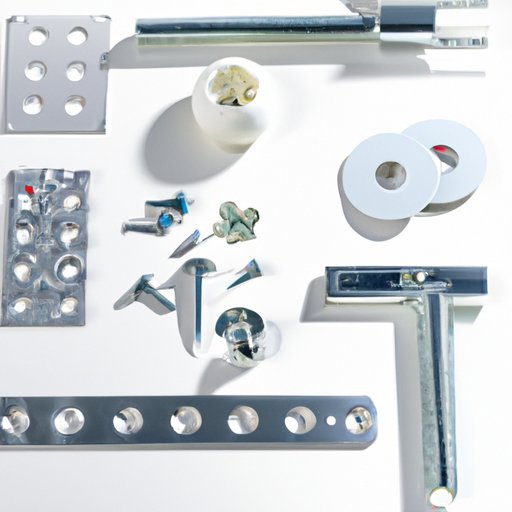Introduction
Finding ceiling studs can be difficult and time consuming. A stud is a vertical framing member in a wall or ceiling which provides support for the wall or ceiling. Knowing where the studs are located is essential for safely hanging items such as shelves, pictures, mirrors, and more. To make this task easier, there are several different tools and techniques that can be used to locate studs.
Using a Magnetic Stud Finder
One of the most common tools used to find ceiling studs is a magnetic stud finder. This tool uses a magnet to detect the nails or screws that hold the drywall to the studs. The main advantage of using a magnetic stud finder is that it is fast and easy to use. To use this tool, you simply move it around the area you want to search until the indicator light turns on, which indicates that a stud has been found.

Knocking on the Ceiling and Listening for Solid Wood
Another way to find ceiling studs is to knock on the ceiling and listen for solid wood. This method works by listening for a difference in sound when knocking on the drywall versus when knocking on a stud. When you knock on a stud, the sound will be much more solid and distinct than when you knock on the drywall. This technique can also be used to determine if two adjacent studs are located close together.
Looking for Nail Holes in Drywall
Another effective way to find ceiling studs is to look for nail holes in the drywall. This is because nails or screws are typically used to attach the drywall to the studs. When you find a nail hole, it is a good indication that a stud is located behind the drywall. You can then use the other methods discussed here to confirm the presence of the stud.

Tracing Electrical Outlets or Light Fixtures
If you have an electrical outlet or light fixture on your ceiling, you can trace the wiring back to the studs. This is because the wiring is usually attached to the studs for support. To do this, carefully trace the wiring from the outlet or fixture until you come across a stud. This method is especially useful if you need to hang something directly above an outlet or fixture.
Inspecting the Ceiling Corners
Ceiling corners are another good place to look for studs. This is because the corner studs usually run perpendicular to the rest of the studs in the wall. To inspect the ceiling corners, you should look for signs of nails or screws that indicate a stud is present. You can also use a flashlight to look for any visible gaps between the drywall and the corner studs.

Measuring 16 Inches from a Wall Corner
Studs are typically spaced 16 inches apart, so you can use this information to help locate them. To do this, start by measuring 16 inches from a wall corner and marking the spot. Then, use one of the other methods discussed here to confirm the presence of a stud at the marked location.
Examining the Joists with a Flashlight
If your ceiling has exposed joists, you can use a flashlight to look for studs. This technique works by looking for signs of nails or screws that indicate a stud is present. You should also look for any visible gaps between the drywall and the joists, which can indicate the presence of a stud.
Conclusion
Finding ceiling studs can be a challenging task, but it doesn’t have to be. By using the methods discussed in this article, you can quickly and easily locate studs in your ceiling. Whether you use a stud finder, knock on the ceiling, look for nail holes, trace electrical outlets or light fixtures, inspect the ceiling corners, measure 16 inches from a wall corner, or examine the joists with a flashlight, finding ceiling studs can be done with relative ease.
When attempting to locate ceiling studs, it’s important to remember to always double check your findings before drilling any holes. This will ensure that you don’t accidentally damage any wires or pipes hidden behind the drywall. Additionally, you may want to enlist the help of a professional if you are unsure about the process.
By following these tips and using the appropriate tools and techniques, you can easily find ceiling studs in no time.


